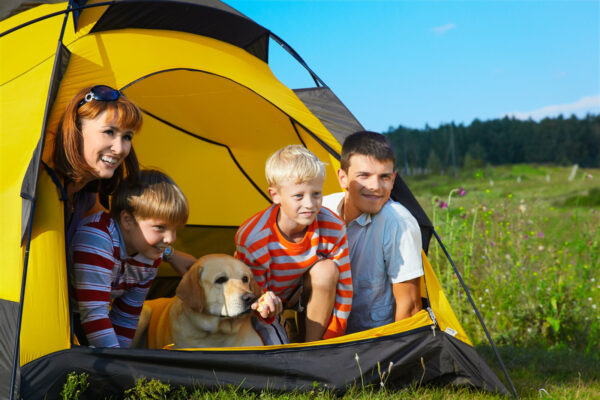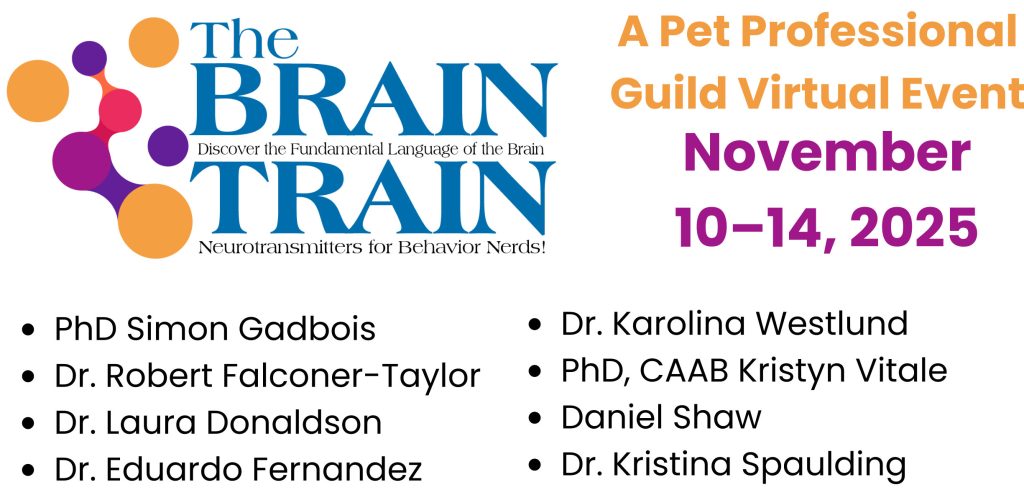General

Ask the Experts: Children and Dog Training
This article provides advice on how to keep young children engaged in the family dog training process By Veronica Boutelle Q: Dear dogbiz, I love working with different clients and figuring out what best fits their learning style. Yet I always feel a bit stumped when working with young children! Recently I had a session with a family and their new puppy to address some biting and mouthing issues. While the children were excited to be there, they were easily distracted and I didn’t feel my explanations were really landing.… Continued
Exploring Uncomfortable Truths
This article discusses why the equestrian world has much work to do if it is ever going to grant horses the same sentiency which UK law now states they are entitled to have By Melanie Watson I’ve been mulling over a recent experience of being harassed online. The person involved tried very hard to put me down, blasting me with their immovable opinions, over and over again. The thing which worried me the most, was the inflexibility of his views. His hard held beliefs would not allow any sway into… Continued
What If My Dog Doesn’t Like You?
This article sets out steps you can take to help ensure a smooth introduction between your human-reactive dog and your new partner, as well as their extended family By Gail Radtke Sudden life changes can bring both many rewards and challenges. I’ve had the opportunity the past few years to share my experiences by writing about the journey that my three dogs and I have been on. This experience is a deeply personal one that I felt I really needed to share, as I am sure there are many people… Continued
Hunting the Elusive Red Dot
This article examines a recent study that explores the downside of laser light pointers in feline play and outlines alternative toy and puzzle choices to ensure cats have the opportunity to complete the hunting sequence By Andrea Carne Laser light pointers are commonly found in pet stores and veterinary clinics worldwide. They remain an extremely popular toy with cat owners of all age. And yet, many cat behavior consultants generally discourage the use of them. Why? Well, the simple answer lies in the idea that the incessant chasing of the… Continued

Front Door Freakout
This article looks into a dog’s varied emotional states associated with doors and provides three strategies for training or managing a door-dashing pup to ensure they stay calm and safe By Karen Baragona If you come to my house, brace yourself. You walk up the stairs, ring the doorbell. Suddenly…the shrieking of a hundred banshees? Maybe an exorcism in progress? Or fiery-eyed, froth-mawed Cerberus guarding the gates of Hades? Nope. It’s my people-loving hound Huckleberry going freakshow crazy at the front door. Sometimes trainers’ own dogs can make people doubt our… Continued
Understanding Livestock Guardian Dogs
This article discusses the use of Livestock Guardian Dogs to protect livestock predation, with the aim of reducing and, ultimately, preventing a reliance on baiting, trapping and shooting of predators through the introduction of a more science-based approach and a better understanding of the breed By Erin Williams Livestock Guardian Dogs (LGDs) traditionally live alongside livestock in agricultural regions throughout the world. These dogs have been specifically bred to protect livestock from predation, and sometimes from stealing. Traditionally, and still to this day, they play a very important role in… Continued

Just Say No to Saying “NO!”
This article explains why shouting “NO” at your dog is ineffectual and counterproductive, and outlines what you can do instead By Karen Baragona It’s almost a reflex. There goes Rover, in hot pursuit of the cat, or gnawing on the sofa, or slurping at your dinner plate, or barking threats at squirrels…and we just need it to STOP, so we shout “NO!” Then one of several things happens: The behavior pauses for a split second, then resumes. Or, if you have a “soft” dog whose feelings are easily bruised, he’ll… Continued
Ensuring Quality of Life for Blind Dogs
This article sets out tips for how owners of blind dogs can ensure their canines get to live their best possible lives, with a focus on the needs of each individual dog By Deb Bauer The number one question that comes up when a dog becomes blind is whether the dog will have any quality of life. Whether a dog is born this way or develops blindness later in life, people are always very concerned about the dog being able to be happy and live a good life. Many people… Continued
A Beautiful Life with a Visually Impaired Dog
This interview features Lutz, Florida-based trainer Angelica Steinker explaining how she discovered that her new puppy Particle was visually impaired, and outlining the environmental and management adjustments she has made to ensure he can still live his life to the fullest By Susan Nilson Puppy parent, professional dog trainer, and agility and dock diving specialist Angelica Steinker, founder and president of the Courteous Canine in Tampa, Florida, found herself with an unexpected challenge when she realized her newly adopted border collie puppy, Particle, was having issues with his vision. Steinker… Continued
The Many Benefits of Using a Therapy Dog in Speech Language Pathology
This article explains how a speech language pathologist uses therapy dogs in her practice to help clients improve their interpersonal and communication skills, build self-esteem and self-worth, and reduce feelings of loneliness and isolation By Dr. Jane Remington-Gurney Introduction In the literature of journal articles, news stories and websites, animals are often reported to have the ability to improve the well-being of people. Components of well-being include improved interpersonal and communication skills, sense of purpose and motivation, fine motor skills, strength and balance, self-esteem, and self-worth plus a reduction in… Continued
Examining Training Methods
This article delves into the differences of opinion regarding the philosophical approach and structure toward pet training and highlights the need for trainers – and pet owners – to be cognizant of what an animal is communicating, their emotional state, and to understand how and why they are reacting or responding to a specific situation or context By Susan Nilson and Niki Tudge Significantly, there is no consensus across the pet industry with regards to the suitability and appropriateness of the different best practice models. In 2012, the Pet Professional… Continued

How Your Donations Are Helping the Animals in Ukraine
By Dr. Marina Bayeva Dear Supporters, I am happy to bring you the latest update for the Help Animals Survive the War in Ukraine fundraiser – both the big picture and the individual shelter updates. Highlights include: Animals finding new homes even during the war Expanding capacity by building new enclosures to take in even more animals Kitten and puppy season and the need for more spay/neuter access Delivering food all over Ukraine for animals on the streets, in home shelters, and beyond A brand new wood-burning stove to cook for… Continued
Because Dogs Are Cool!
PPG Member Profile featuring Pet Professional Guild member Chris Lopez-Santiago of Happy Tails Pet Care in Orlando, Florida Tell us a little bit about yourself, how you first got into animal behavior and training and what you are doing now… Honestly, getting into animal behavior was not something I thought I would ever do. I knew I always loved animals of all types. Dogs, cats, birds, reptiles, fish, and even insects and arachnids are fascinating to me. I’d often watch Zak George on YouTube to learn how to teach… Continued
Building Your Client an Effective Pet Training Program
This article presents guidelines for dog training professionals to help them build training programs for their clients, including lesson and individual session plans By Niki Tudge When we are building an effective training program for clients and their dogs, we usually start the process by completing a full client intake procedure and going to the client’s home and completing the informant interview. From here, we should then be ready to build our client a training program that includes the Training Road Map, Individual Lesson Plans, and Hands-on Sessions.… Continued
Ask the Experts: How to Run a Dog Training Business Online
This article provides guidance on how to move an in-person dog training business to an online dog training business By Veronica Boutelle Q: I’m at a turning point with my dog training business and just don’t know how to move forward. During lockdown I had to shift my services online and while it was daunting to begin with, I ended up really enjoying it. It allowed me to spend more time at home and less time driving for hours in the car, and the results with clients were… Continued
A Complete Guide to Equine Enrichment
This article presents multiple suggestions for providing enrichment to our horses, including food puzzles and games, different turnout options, opportunities for social interaction, environmental enrichment, and feeding options By Kathie Gregory Enrichment is a word that is becoming increasingly used to describe how we do more than provide welfare to our companion animals. Awareness of enrichment is very high in the dog world, and there are plenty of ideas and products that cater for the different breeds, traits, and personalities to ensure dogs have a wide variety… Continued
A Masterclass in Enrichment
This article reports on some of the wonderful work being done by the teaching staff and students at a New England Technical High School to ensure their resident birds and animals have an array of enrichment opportunities available to ensure mental stimulation By Sheila S. Blanchette As a professional certified parrot behavior consultant and trainer, I enjoy finding opportunities to improve my skills and also have a little fun along the way. As such, I volunteer at local animal rescues in my area and in doing so,… Continued
Scents and Sense-ability
This article examines a new study that explores the importance cats place on an absent owner’s smell vs. their physical presence By Andrea Carne “Smell is a potent wizard that transports you across thousands of miles and all the years you have lived.” – Helen Keller Olfaction – the sense of smell – I’m sure we are all aware that it’s incredibly important to many species, including humans and dogs. However, I would wager there are many that don’t realise how important it also is for… Continued
10 Steps for a Happy Office Dog
This article provides suggestions and advice for ensuring your dog feels safe and happy as an office dog, as well as pointing out the signs of stress to look out for By Chantal Hughes We know there is a link between happiness in the workplace and increased productivity. Findings from research coming out of Virginia Commonwealth University in the USA report that “[m]an’s best friend may make a positive difference in the workplace by reducing stress and making the job more satisfying for other employees.” (Barker et al., 2012). Great… Continued
New Beginnings
This article relates the impact the pandemic had on one professional dog trainer’s business and how it empowered her to make life-changing decisions about her future – both personally and professionally By Gail Radtke In April 2020, right at the beginning of the pandemic, I closed my dog training facility that I had been operating in Pitt Meadows, British Columbia, and moved all the equipment into my garage. Like so many other people at the time I was unsure, unprepared, and overwhelmed, but knew I had to make fast decisions… Continued
Teaching My Hound NOT To Hunt
This article details how a dog obsessed with chasing squirrels learned, through repetition and reinforcement of an alternative behavior, to leave the squirrels alone By Karen Baragona Shhhh. Can you keep a secret? I used to HATE walking my dog. Why? Because my neighborhood is full of squirrels, and every time my dog saw one, she went freak-show crazy. Airborne. Yowling, lunging, sometimes even pulling me off my feet and dragging me along the sidewalk. People literally stopped and stared. Windows flew open and heads craned out to investigate the commotion.… Continued
Car Woes: A Tale of Botched Socialization
This article tells the tale of Huckleberry, a dog fearful of riding in the car, and the importance of moving at the dog’s pace when engaging in a DS/CC protocol By Karen Baragona Poor shivering, quivering Huckleberry. Not because it’s cold out; she couldn’t care less about that. This is fear. Huckleberry is about to experience something that makes most dogs jump for joy, and she’s beside herself with fright: She’s going for a ride in the car. Part of this is my fault. When we adopted her, Huckleberry was… Continued
Punishment in Animal Training
This article examines the growing body of research indicating that reward-based training, and the subsequent absence of stress, anxiety, pain, force, and fear, may improve an animal’s ability to learn; and that aversive training techniques can have adverse effects on a dog’s behavior By Susan Nilson and Niki Tudge The United Nations (UN) Committee on the Rights of the Child (2006), defines corporal or physical punishment as “any punishment in which physical force is used and intended to cause some degree of pain or discomfort, however light…Physical punishment… Continued
How Animals Learn
This article presents an overview of the types of learning, animal emotions vs. animal behaviors, applied behavior analysis, and choice and empowerment in animal training By Niki Tudge Like humans, animals can learn in a healthy, humane and safe manner, or, conversely, through pain, force and fear. In cases of high emotional arousal (“emotional hijacking”), the emotional brain inhibits the rational brain and an animal will go into fight or flight mode. In biological terms, this means it is difficult, if not impossible, for them to learn productively when in… Continued
1 2 3 … 13 Next »

